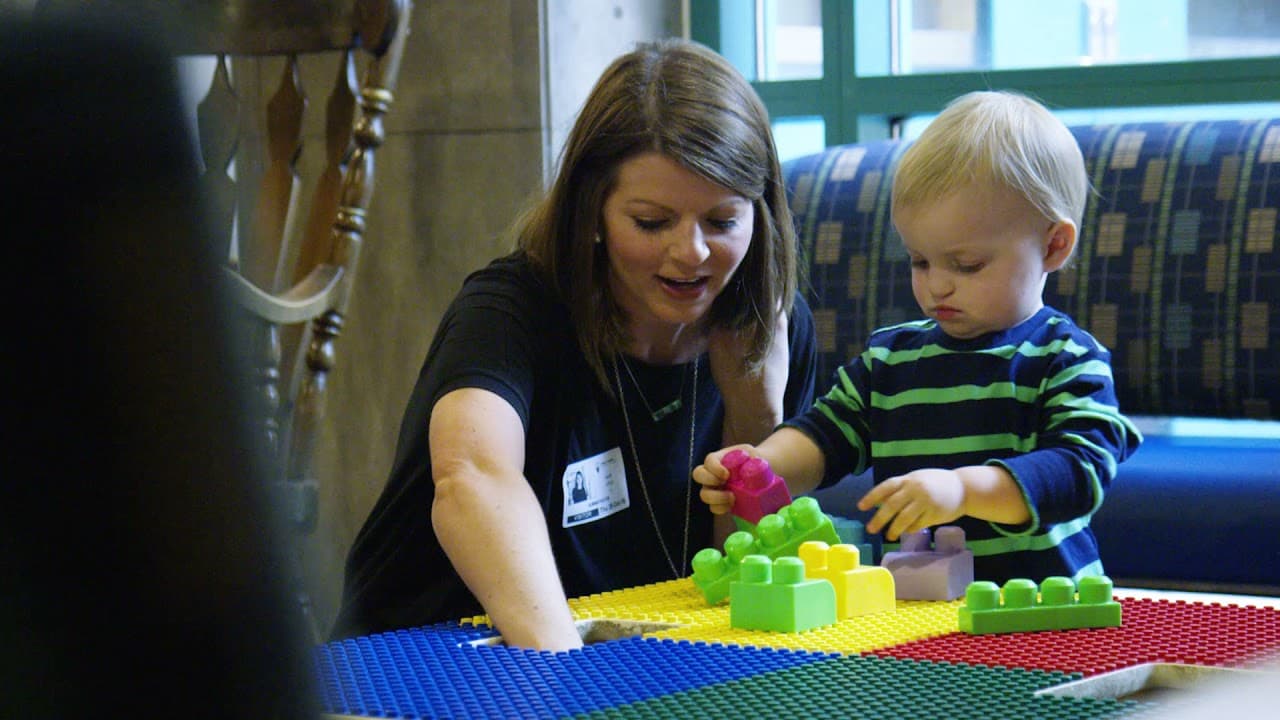
Cleft Lip
Loading component...
Loading component...
Loading component...
Loading component...
Loading component...
Loading component...
Loading component...
Loading component...
Loading component...
Loading component...
Locations for Cleft Lip care
Shriners Children's provides specialty health care to children around the world. We offer a comprehensive range of treatments, services and support to improve the quality of our patients’ lives and help them reach their full potential.
Loading component...

{"items":[{"title":"Shriners Children's Boston","image":"https://edge.sitecorecloud.io/shrinershosf393-shriners4ad9-prodb963-58d8/media/project/shriners/shc/migration-images/related-locations-dropdown-carousel/boston-hospital-back-view-961x640-64444-ashx.jpeg?h=640&iar=0&w=961","imageAlt":"boston-hospital-back-view-961x640-64444-ashx","text":"Pediatric specialty care for children throughout Massachusetts and beyond","ctaItem":{"ctaLinkIcon":"https://edge.sitecorecloud.io/shrinershosf393-shriners4ad9-prodb963-58d8/media/icons/si-nonhero-icons-_-24x24px/solid-white-_-24x24px/mappin_24x24_whitesolid.svg?iar=0","ctaLinkText":"More About This Location","ctaLink":"https://www.shrinerschildrens.org/en/locations/boston"},"itemId":"https://www.shrinerschildrens.org/en/locations/boston"},{"title":"Shriners Hospitals for Children Canada","image":"https://edge.sitecorecloud.io/shrinershosf393-shriners4ad9-prodb963-58d8/media/project/shriners/shc/migration-images/related-locations-dropdown-carousel/canada-hospital-exterior-961x640-65566-ashx.jpeg?h=640&iar=0&w=961","imageAlt":"canada-hospital-exterior-961x640-65566-ashx","text":"Pediatric specialty care for children throughout Montreal and beyond","ctaItem":{"ctaLinkIcon":"https://edge.sitecorecloud.io/shrinershosf393-shriners4ad9-prodb963-58d8/media/icons/si-nonhero-icons-_-24x24px/solid-white-_-24x24px/mappin_24x24_whitesolid.svg?iar=0","ctaLinkText":"More About This Location","ctaLink":"https://www.shrinerschildrens.org/en/locations/canada"},"itemId":"https://www.shrinerschildrens.org/en/locations/canada"},{"title":"Shriners Children's Chicago","image":"https://edge.sitecorecloud.io/shrinershosf393-shriners4ad9-prodb963-58d8/media/project/shriners/shc/migration-images/related-locations-dropdown-carousel/chicago-hospital-exterior-961x640-65608-ashx.jpeg?h=640&iar=0&w=961","imageAlt":"chicago-hospital-exterior-961x640-65608-ashx","text":"Pediatric specialty care for children throughout Illinois and beyond","ctaItem":{"ctaLinkIcon":"https://edge.sitecorecloud.io/shrinershosf393-shriners4ad9-prodb963-58d8/media/icons/si-nonhero-icons-_-24x24px/solid-white-_-24x24px/mappin_24x24_whitesolid.svg?iar=0","ctaLinkText":"More About This Location","ctaLink":"https://www.shrinerschildrens.org/en/locations/chicago"},"itemId":"https://www.shrinerschildrens.org/en/locations/chicago"},{"title":"Houston Cleft Lip and Palate Clinic | Shriners Children's","image":"https://edge.sitecorecloud.io/shrinershosf393-shriners4ad9-prodb963-58d8/media/images/shc/location-entities/texas/patient_provider_960x640_ce7020qd75715edqf94vhfpo66.jpg?h=640&iar=0&w=960","imageAlt":"male provider and male patient in exam room, patient wearing shirt that reads \"make some noise\"","text":"Shriners Children's Texas hosts a regular pediatric cleft lip and palate clinic in downtown Houston in Scurlock Tower on the 19th floor.","ctaItem":{"ctaLinkIcon":"https://edge.sitecorecloud.io/shrinershosf393-shriners4ad9-prodb963-58d8/media/icons/si-nonhero-icons-_-24x24px/solid-white-_-24x24px/mappin_24x24_whitesolid.svg?iar=0","ctaLinkText":"More About This Location","ctaLink":"https://www.shrinerschildrens.org/en/locations/texas/clinics/houston-cleft-lip-and-palate-clinic"},"itemId":"https://www.shrinerschildrens.org/en/locations/texas/clinics/houston-cleft-lip-and-palate-clinic"},{"title":"Shriners Children's New England","image":"https://edge.sitecorecloud.io/shrinershosf393-shriners4ad9-prodb963-58d8/media/project/shriners/shc/migration-images/related-locations-dropdown-carousel/springfield-building-exterior-961x640-63900-ashx.jpeg?h=640&iar=0&w=961","imageAlt":"springfield-building-exterior-961x640-63900-ashx","text":"Pediatric specialty care for children throughout Massachusetts and beyond","ctaItem":{"ctaLinkIcon":"https://edge.sitecorecloud.io/shrinershosf393-shriners4ad9-prodb963-58d8/media/icons/si-nonhero-icons-_-24x24px/solid-white-_-24x24px/mappin_24x24_whitesolid.svg?iar=0","ctaLinkText":"More About This Location","ctaLink":"https://www.shrinerschildrens.org/en/locations/new-england"},"itemId":"https://www.shrinerschildrens.org/en/locations/new-england"},{"title":"Shriners Children's Northern California","image":"https://edge.sitecorecloud.io/shrinershosf393-shriners4ad9-prodb963-58d8/media/project/shriners/shc/migration-images/related-locations-dropdown-carousel/sacramento-building-exterior-961x640-294-ashx.jpeg?h=640&iar=0&w=961","imageAlt":"sacramento-building-exterior-961x640-294-ashx","text":"Pediatric specialty care for children throughout Northern California, Western U.S., Northwestern Mexico and Canada","ctaItem":{"ctaLinkIcon":"https://edge.sitecorecloud.io/shrinershosf393-shriners4ad9-prodb963-58d8/media/icons/si-nonhero-icons-_-24x24px/solid-white-_-24x24px/mappin_24x24_whitesolid.svg?iar=0","ctaLinkText":"More About This Location","ctaLink":"https://www.shrinerschildrens.org/en/locations/northern-california"},"itemId":"https://www.shrinerschildrens.org/en/locations/northern-california"},{"title":"Shriners Children's Ohio","image":"https://edge.sitecorecloud.io/shrinershosf393-shriners4ad9-prodb963-58d8/media/project/shriners/shc/migration-images/related-locations-dropdown-carousel/shriners-childrens-ohio-lobby-960x640-ashx.jpeg?h=640&iar=0&w=960","imageAlt":"shriners-childrens-ohio-lobby-960x640-ashx","text":"Pediatric specialty care for children throughout Ohio and beyond","ctaItem":{"ctaLinkIcon":"https://edge.sitecorecloud.io/shrinershosf393-shriners4ad9-prodb963-58d8/media/icons/si-nonhero-icons-_-24x24px/solid-white-_-24x24px/mappin_24x24_whitesolid.svg?iar=0","ctaLinkText":"More About This Location","ctaLink":"https://www.shrinerschildrens.org/en/locations/ohio"},"itemId":"https://www.shrinerschildrens.org/en/locations/ohio"},{"title":"Shriners Children's Philadelphia","image":"https://edge.sitecorecloud.io/shrinershosf393-shriners4ad9-prodb963-58d8/media/project/shriners/shc/migration-images/related-locations-dropdown-carousel/philadelphia-hospital-exterior-961x640-65326-ashx.jpeg?h=640&iar=0&w=961","imageAlt":"philadelphia-hospital-exterior-961x640-65326-ashx","text":"Pediatric specialty care for children throughout Pennsylvania and beyond","ctaItem":{"ctaLinkIcon":"https://edge.sitecorecloud.io/shrinershosf393-shriners4ad9-prodb963-58d8/media/icons/si-nonhero-icons-_-24x24px/solid-white-_-24x24px/mappin_24x24_whitesolid.svg?iar=0","ctaLinkText":"More About This Location","ctaLink":"https://www.shrinerschildrens.org/en/locations/philadelphia"},"itemId":"https://www.shrinerschildrens.org/en/locations/philadelphia"},{"title":"Shriners Children's Portland","image":"https://edge.sitecorecloud.io/shrinershosf393-shriners4ad9-prodb963-58d8/media/project/shriners/shc/migration-images/related-locations-dropdown-carousel/portland-building-exterior-961x640-63358-ashx.jpeg?h=640&iar=0&w=961","imageAlt":"portland-building-exterior-961x640-63358-ashx","text":"Pediatric specialty care for children throughout Oregon and beyond","ctaItem":{"ctaLinkIcon":"https://edge.sitecorecloud.io/shrinershosf393-shriners4ad9-prodb963-58d8/media/icons/si-nonhero-icons-_-24x24px/solid-white-_-24x24px/mappin_24x24_whitesolid.svg?iar=0","ctaLinkText":"More About This Location","ctaLink":"https://www.shrinerschildrens.org/en/locations/portland"},"itemId":"https://www.shrinerschildrens.org/en/locations/portland"},{"title":"Shriners Children's Salt Lake City","image":"https://edge.sitecorecloud.io/shrinershosf393-shriners4ad9-prodb963-58d8/media/project/shriners/shc/migration-images/related-locations-dropdown-carousel/salt-lake-city-hospital-exterior-961x640-37973-ashx.jpeg?h=640&iar=0&w=961","imageAlt":"salt-lake-city-hospital-exterior-961x640-37973-ashx","text":"Pediatric specialty care for children throughout Utah and beyond","ctaItem":{"ctaLinkIcon":"https://edge.sitecorecloud.io/shrinershosf393-shriners4ad9-prodb963-58d8/media/icons/si-nonhero-icons-_-24x24px/solid-white-_-24x24px/mappin_24x24_whitesolid.svg?iar=0","ctaLinkText":"More About This Location","ctaLink":"https://www.shrinerschildrens.org/en/locations/salt-lake-city"},"itemId":"https://www.shrinerschildrens.org/en/locations/salt-lake-city"},{"title":"Shriners Children's Shreveport","image":"https://edge.sitecorecloud.io/shrinershosf393-shriners4ad9-prodb963-58d8/media/project/shriners/shc/migration-images/related-locations-dropdown-carousel/shreveport-building-exterior-961x640-69307-ashx.jpeg?h=640&iar=0&w=961","imageAlt":"shreveport-building-exterior-961x640-69307-ashx","text":"Pediatric specialty care for children throughout Louisiana and beyond","ctaItem":{"ctaLinkIcon":"https://edge.sitecorecloud.io/shrinershosf393-shriners4ad9-prodb963-58d8/media/icons/si-nonhero-icons-_-24x24px/solid-white-_-24x24px/mappin_24x24_whitesolid.svg?iar=0","ctaLinkText":"More About This Location","ctaLink":"https://www.shrinerschildrens.org/en/locations/shreveport"},"itemId":"https://www.shrinerschildrens.org/en/locations/shreveport"},{"title":"Shriners Children's Southern California","image":"https://edge.sitecorecloud.io/shrinershosf393-shriners4ad9-prodb963-58d8/media/project/shriners/shc/migration-images/related-locations-dropdown-carousel/front-of-building-961x640-60428-ashx.jpeg?h=640&iar=0&w=961","imageAlt":"front-of-building-961x640-60428-ashx","text":"Pediatric specialty care for children throughout California and beyond","ctaItem":{"ctaLinkIcon":"https://edge.sitecorecloud.io/shrinershosf393-shriners4ad9-prodb963-58d8/media/icons/si-nonhero-icons-_-24x24px/solid-white-_-24x24px/mappin_24x24_whitesolid.svg?iar=0","ctaLinkText":"More About This Location","ctaLink":"https://www.shrinerschildrens.org/en/locations/southern-california"},"itemId":"https://www.shrinerschildrens.org/en/locations/southern-california"},{"title":"Shriners Children's St. Louis","image":"https://edge.sitecorecloud.io/shrinershosf393-shriners4ad9-prodb963-58d8/media/project/shriners/shc/migration-images/related-locations-dropdown-carousel/st-louis-hospital-exterior-961x640-298-ashx.jpeg?h=640&iar=0&w=961","imageAlt":"st-louis-hospital-exterior-961x640-298-ashx","text":"Pediatric specialty care for children throughout Missouri and beyond","ctaItem":{"ctaLinkIcon":"https://edge.sitecorecloud.io/shrinershosf393-shriners4ad9-prodb963-58d8/media/icons/si-nonhero-icons-_-24x24px/solid-white-_-24x24px/mappin_24x24_whitesolid.svg?iar=0","ctaLinkText":"More About This Location","ctaLink":"https://www.shrinerschildrens.org/en/locations/st-louis"},"itemId":"https://www.shrinerschildrens.org/en/locations/st-louis"},{"title":"Shriners Children's Texas","image":"https://edge.sitecorecloud.io/shrinershosf393-shriners4ad9-prodb963-58d8/media/project/shriners/shc/migration-images/related-locations-dropdown-carousel/texas-building-exterior-961x640-63296-ashx.jpeg?h=640&iar=0&w=961","imageAlt":"texas-building-exterior-961x640-63296-ashx","text":"Pediatric specialty care for children throughout Texas and beyond","ctaItem":{"ctaLinkIcon":"https://edge.sitecorecloud.io/shrinershosf393-shriners4ad9-prodb963-58d8/media/icons/si-nonhero-icons-_-24x24px/solid-white-_-24x24px/mappin_24x24_whitesolid.svg?iar=0","ctaLinkText":"More About This Location","ctaLink":"https://www.shrinerschildrens.org/en/locations/texas"},"itemId":"https://www.shrinerschildrens.org/en/locations/texas"},{"title":"Shriners Children's Tijuana Clinic","image":"https://edge.sitecorecloud.io/shrinershosf393-shriners4ad9-prodb963-58d8/media/images/shc/location-entities/southern-california/hospital_angeles_hospital_exterior_961x640_42017.jpg?h=640&iar=0&w=961","imageAlt":"Hospital Angeles Tijuana building exterior","text":"The Shriners Children's Tijuana Clinic is convenient for those who live in Baja California, Mexico.","ctaItem":{"ctaLinkIcon":"https://edge.sitecorecloud.io/shrinershosf393-shriners4ad9-prodb963-58d8/media/icons/si-nonhero-icons-_-24x24px/solid-white-_-24x24px/mappin_24x24_whitesolid.svg?iar=0","ctaLinkText":"More About This Location","ctaLink":"https://www.shrinerschildrens.org/en/locations/mexico/clinics/tijuana-clinic"},"itemId":"https://www.shrinerschildrens.org/en/locations/mexico/clinics/tijuana-clinic"},{"title":"Shriners Children's Vancouver Clinic","image":"https://edge.sitecorecloud.io/shrinershosf393-shriners4ad9-prodb963-58d8/media/images/shc/location-entities/portland/vancouver_outreach_clinic_960x640_0gl8fful0p105b17nouuf6tv0a.jpg?h=640&iar=0&w=960","imageAlt":"a brick building in front of a flower lawn","text":"Shriners Children's Vancouver clinic is an extension of Shriners Children's Portland, conveniently located for families in Southwest Washington. ","ctaItem":{"ctaLinkIcon":"https://edge.sitecorecloud.io/shrinershosf393-shriners4ad9-prodb963-58d8/media/icons/si-nonhero-icons-_-24x24px/solid-white-_-24x24px/mappin_24x24_whitesolid.svg?iar=0","ctaLinkText":"More About This Location","ctaLink":"https://www.shrinerschildrens.org/en/locations/portland/clinics/vancouver-wa-clinic"},"itemId":"https://www.shrinerschildrens.org/en/locations/portland/clinics/vancouver-wa-clinic"}]}Services We Provide
Shriners Children's offers dental radiology which uses painless X-ray machines such as pan ceph and CBCT, to show surgeons 3D views of a child's jaw bone, teeth and other facial structures. This helps with evaluation and treatment planning.

Psychiatry & Psychological Services
Our psychologists at Shriners Children's specialize in evaluating and providing support to children and their families who are adjusting to a new diagnosis or having difficulty in their everyday lives due to trauma.

Facial and Dental Imaging
Shriners Children’s offers specialized facial and dental imaging (X-rays) for children with craniofacial differences. The painless process helps surgeons and doctors understand each child’s unique facial anatomy to plan treatment.

Speech Therapy
The speech therapy services available to patients at Shriners Children’s benefit children from birth through adolescence who have difficulties with communication and swallowing.

Dentistry
Shriners Children’s offers a multidisciplinary team to address your dental concerns related to a variety of craniofacial conditions. Our specialists will evaluate your child and provide an individualized care plan.

Care Management
The care management team at Shriners Children's consists of registered nurses and social workers who act as resources for families throughout their plan of care.

Child Life Services
Child life professionals at Shriners Children’s take pride in focusing on the "above and beyond" aspects of medical care for our patients. From procedure support to camps, they are ready to advocate for your family.




